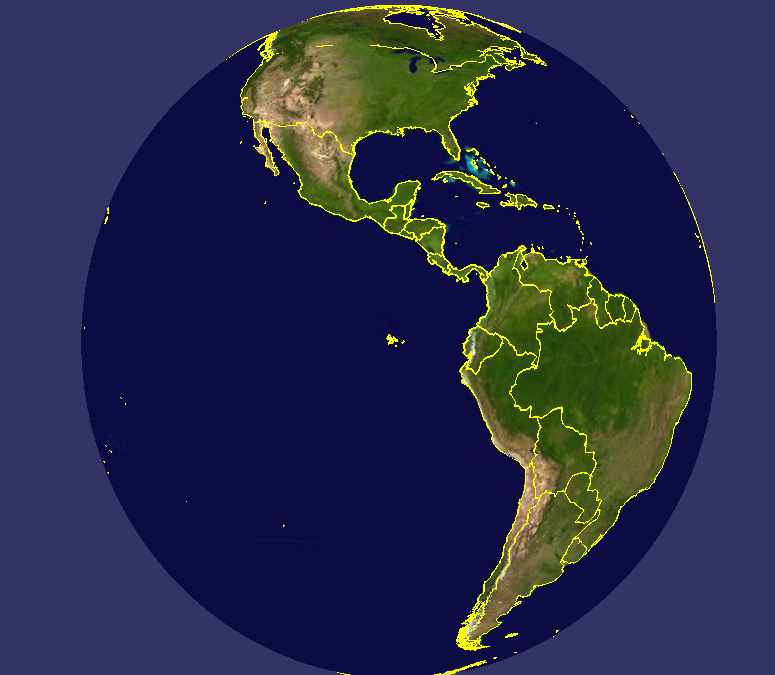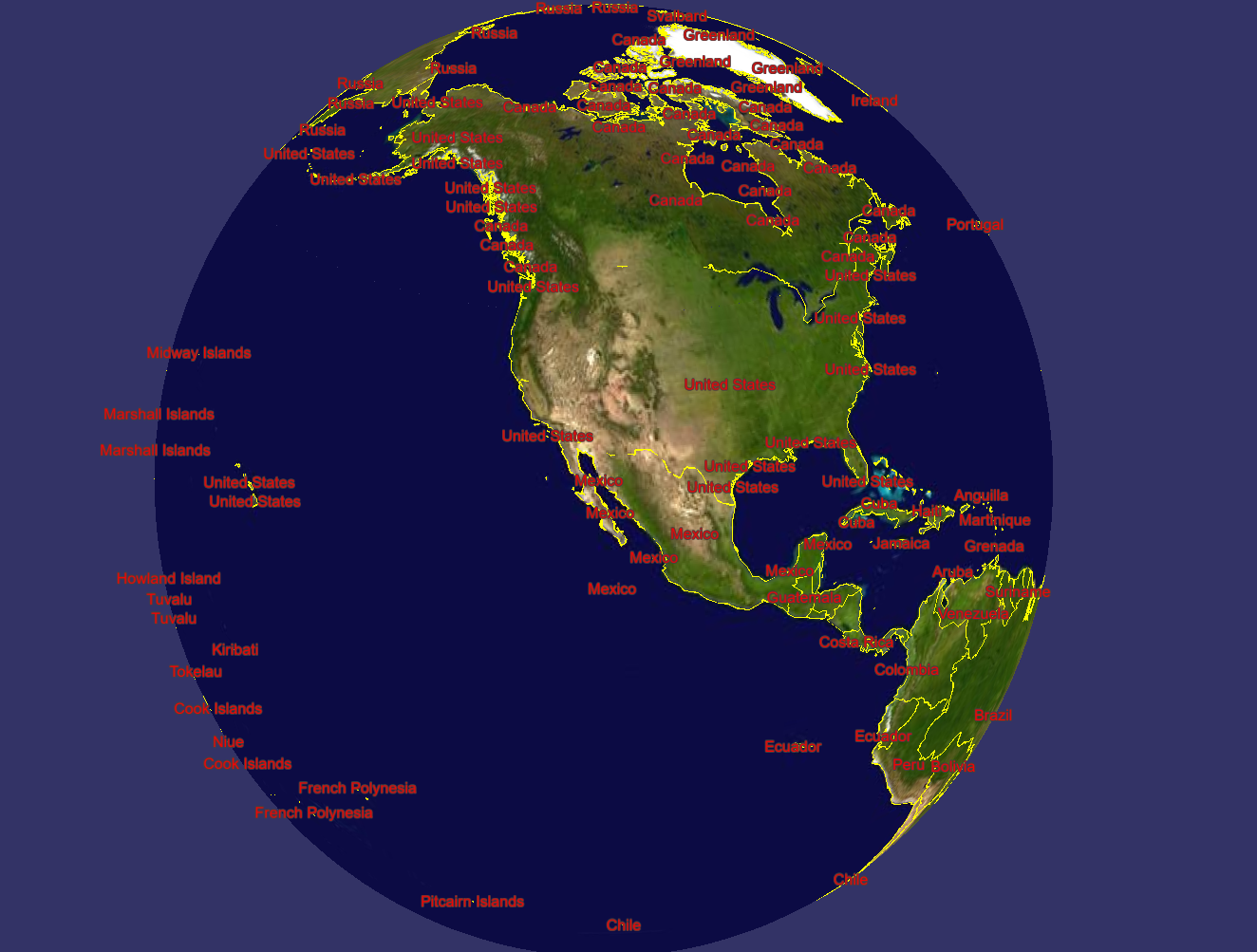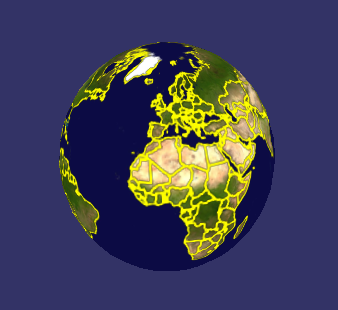[原][OE][官方例子]osgearth_features OE地球添加shp文件(特征标识)

官方示例代码
/* -*-c++-*- */ /* osgEarth - Dynamic map generation toolkit for OpenSceneGraph * Copyright 2016 Pelican Mapping * http://osgearth.org * * osgEarth is free software; you can redistribute it and/or modify * it under the terms of the GNU Lesser General Public License as published by * the Free Software Foundation; either version 2 of the License, or * (at your option) any later version. * * THE SOFTWARE IS PROVIDED "AS IS", WITHOUT WARRANTY OF ANY KIND, EXPRESS OR * IMPLIED, INCLUDING BUT NOT LIMITED TO THE WARRANTIES OF MERCHANTABILITY, * FITNESS FOR A PARTICULAR PURPOSE AND NONINFRINGEMENT. IN NO EVENT SHALL THE * AUTHORS OR COPYRIGHT HOLDERS BE LIABLE FOR ANY CLAIM, DAMAGES OR OTHER * LIABILITY, WHETHER IN AN ACTION OF CONTRACT, TORT OR OTHERWISE, ARISING * FROM, OUT OF OR IN CONNECTION WITH THE SOFTWARE OR THE USE OR OTHER DEALINGS * IN THE SOFTWARE. * * You should have received a copy of the GNU Lesser General Public License * along with this program. If not, see <http://www.gnu.org/licenses/> */ #include <osg/Notify> #include <osgGA/StateSetManipulator> #include <osgViewer/Viewer> #include <osgViewer/ViewerEventHandlers> #include <osgEarth/Map> #include <osgEarth/MapNode> #include <osgEarth/ImageLayer> #include <osgEarth/ModelLayer> #include <osgEarthUtil/ExampleResources> #include <osgEarthUtil/EarthManipulator> #include <osgEarthUtil/AutoClipPlaneHandler> #include <osgEarthSymbology/Style> #include <osgEarthFeatures/FeatureModelLayer> #include <osgEarthFeatures/ConvertTypeFilter> #include <osgEarthDrivers/engine_rex/RexTerrainEngineOptions> #include <osgEarthDrivers/gdal/GDALOptions> #include <osgEarthDrivers/feature_ogr/OGRFeatureOptions> #include <osgEarthDrivers/agglite/AGGLiteOptions> #include <osgEarthDrivers/model_feature_geom/FeatureGeomModelOptions> #include <osgDB/WriteFile> using namespace osgEarth; using namespace osgEarth::Features; using namespace osgEarth::Drivers; using namespace osgEarth::Symbology; using namespace osgEarth::Util; int usage(const std::string& app) { OE_NOTICE "\n" << app << "\n" << " --rasterize : draw features as rasterized image tiles \n" << " --overlay : draw features as projection texture \n" << " --mem : load features from memory \n" << " --labels : add feature labels \n" << "\n" << MapNodeHelper().usage(); return -1; } // // NOTE: run this sample from the repo/tests directory. // int main(int argc, char** argv) { osg::ArgumentParser arguments(&argc, argv); if (arguments.read("--help")) return usage(argv[0]); bool useRaster = arguments.read("--rasterize"); bool useOverlay = arguments.read("--overlay"); bool useMem = arguments.read("--mem"); bool useLabels = arguments.read("--labels"); osgViewer::Viewer viewer(arguments); // Start by creating the map: Map* map = new Map(); // Start with a basemap imagery layer; we'll be using the GDAL driver // to load a local GeoTIFF file: GDALOptions basemap; basemap.url() = "E:/temp/OE/data/world.tif"; map->addLayer(new ImageLayer(ImageLayerOptions("basemap", basemap))); // Next we add a feature layer. OGRFeatureOptions ogrData; if (!useMem) { // Configures the feature driver to load the vectors from a shapefile: ogrData.url() = "E:/temp/OE/data/world.shp"; } else { // the --mem options tells us to just make an in-memory geometry: Ring* line = new Ring(); line->push_back(osg::Vec3d(-60, 20, 0)); line->push_back(osg::Vec3d(-120, 20, 0)); line->push_back(osg::Vec3d(-120, 60, 0)); line->push_back(osg::Vec3d(-60, 60, 0)); ogrData.geometry() = line; } // Make a feature source layer and add it to the Map: FeatureSourceLayerOptions ogrLayer; ogrLayer.name() = "vector-data"; ogrLayer.featureSource() = ogrData; map->addLayer(new FeatureSourceLayer(ogrLayer)); // Define a style for the feature data. Since we are going to render the // vectors as lines, configure the line symbolizer: Style style; LineSymbol* ls = style.getOrCreateSymbol<LineSymbol>(); ls->stroke()->color() = Color::Yellow; ls->stroke()->width() = 2.0f; // That's it, the map is ready; now create a MapNode to render the Map: osgEarth::Drivers::RexTerrainEngine::RexTerrainEngineOptions rex; MapNodeOptions mapNodeOptions; mapNodeOptions.enableLighting() = false; mapNodeOptions.setTerrainOptions(rex); MapNode* mapNode = new MapNode(map, mapNodeOptions); osg::Group* root = new osg::Group(); root->addChild(mapNode); viewer.setSceneData(root); viewer.setCameraManipulator(new EarthManipulator()); // Process cmdline args MapNodeHelper().parse(mapNode, arguments, &viewer, root, new LabelControl("Features Demo")); if (useRaster) { AGGLiteOptions rasterOptions; rasterOptions.featureOptions() = ogrData; rasterOptions.styles() = new StyleSheet(); rasterOptions.styles()->addStyle(style); map->addLayer(new ImageLayer("My Features", rasterOptions)); } else //if (useGeom || useOverlay) { FeatureModelLayerOptions fml; fml.name() = "My Features"; fml.featureSourceLayer() = "vector-data"; fml.styles() = new StyleSheet(); fml.styles()->addStyle(style); fml.enableLighting() = false; map->addLayer(new FeatureModelLayer(fml)); } if (useLabels) { // set up symbology for drawing labels. We're pulling the label // text from the name attribute, and its draw priority from the // population attribute. Style labelStyle; TextSymbol* text = labelStyle.getOrCreateSymbol<TextSymbol>(); text->content() = StringExpression("[cntry_name]"); text->priority() = NumericExpression("[pop_cntry]"); text->size() = 16.0f; text->alignment() = TextSymbol::ALIGN_CENTER_CENTER; text->fill()->color() = Color::White; text->halo()->color() = Color::DarkGray; // and configure a model layer: FeatureModelLayerOptions fml; fml.name() = "Labels"; fml.featureSourceLayer() = "vector-data"; //fml.featureSource() = featureOptions; fml.styles() = new StyleSheet(); fml.styles()->addStyle(labelStyle); map->addLayer(new FeatureModelLayer(fml)); } // add some stock OSG handlers: viewer.addEventHandler(new osgViewer::StatsHandler()); viewer.addEventHandler(new osgViewer::WindowSizeHandler()); viewer.addEventHandler(new osgGA::StateSetManipulator(viewer.getCamera()->getOrCreateStateSet())); osg::ref_ptr<osg::GraphicsContext::Traits> traits = new osg::GraphicsContext::Traits; traits->x = 200; traits->y = 200; traits->width = 800; traits->height = 680; traits->windowDecoration = true; traits->doubleBuffer = true; traits->sharedContext = 0; osg::ref_ptr<osg::GraphicsContext> gc = osg::GraphicsContext::createGraphicsContext(traits.get()); osg::ref_ptr<osg::Camera> camera = new osg::Camera; camera->setGraphicsContext(gc.get()); camera->setViewport(new osg::Viewport(0, 0, traits->width, traits->height)); GLenum buffer = traits->doubleBuffer ? GL_BACK : GL_FRONT; camera->setDrawBuffer(buffer); camera->setReadBuffer(buffer); viewer.addSlave(camera); return viewer.run(); }

开启"--labels" 标注的图元信息,这些是读取shp中的字段加载的!
Ring* line = new Ring(); line->push_back(osg::Vec3d(-60, 20, 0)); line->push_back(osg::Vec3d(-120, 20, 0)); line->push_back(osg::Vec3d(-120, 60, 0)); line->push_back(osg::Vec3d(-60, 60, 0)); ogrData.geometry() = line;
开启"--mem"代码绘制

开启"--mem"代码绘制

开启栅格化"--rasterize"



